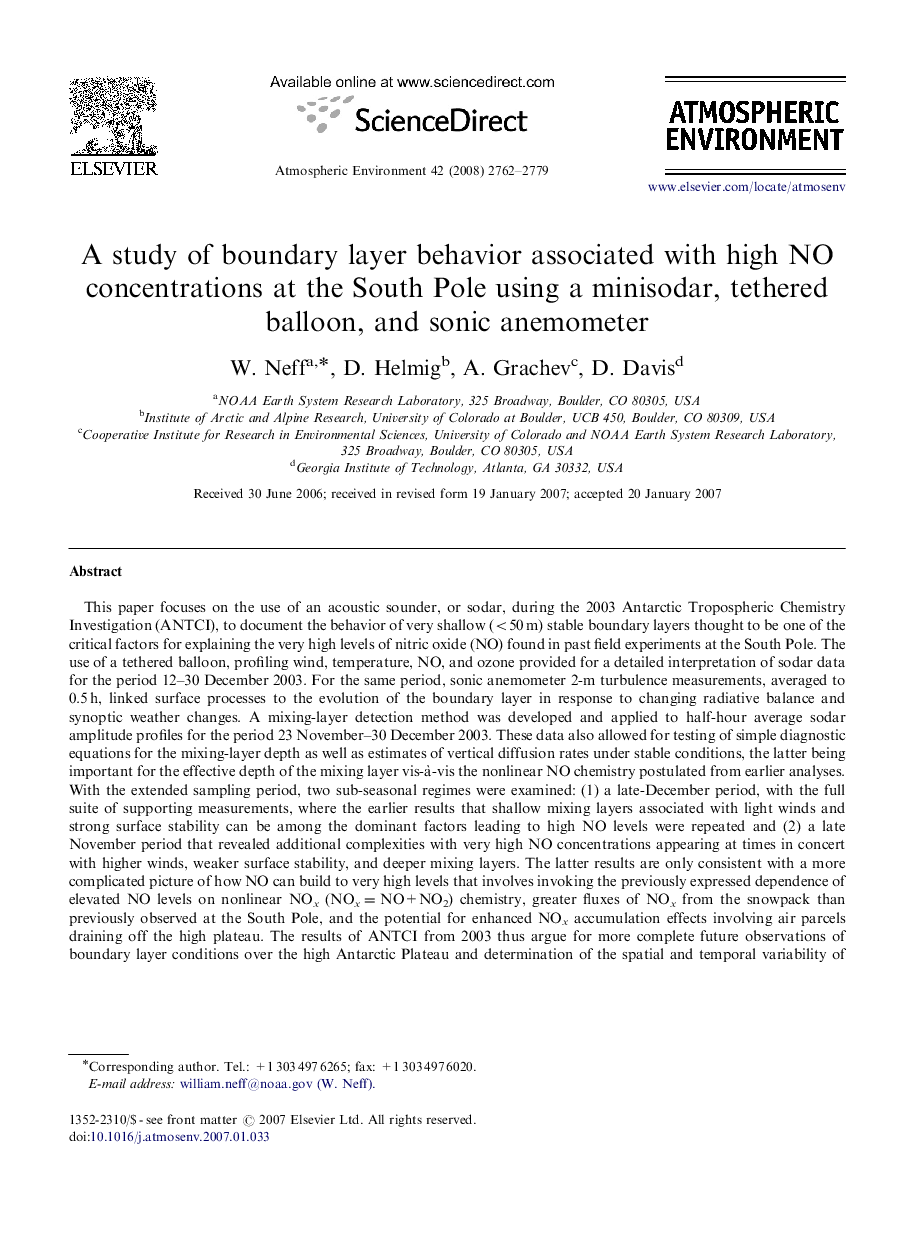| Article ID | Journal | Published Year | Pages | File Type |
|---|---|---|---|---|
| 4442393 | Atmospheric Environment | 2008 | 18 Pages |
Abstract
This paper focuses on the use of an acoustic sounder, or sodar, during the 2003 Antarctic Tropospheric Chemistry Investigation (ANTCI), to document the behavior of very shallow (<50Â m) stable boundary layers thought to be one of the critical factors for explaining the very high levels of nitric oxide (NO) found in past field experiments at the South Pole. The use of a tethered balloon, profiling wind, temperature, NO, and ozone provided for a detailed interpretation of sodar data for the period 12-30 December 2003. For the same period, sonic anemometer 2-m turbulence measurements, averaged to 0.5Â h, linked surface processes to the evolution of the boundary layer in response to changing radiative balance and synoptic weather changes. A mixing-layer detection method was developed and applied to half-hour average sodar amplitude profiles for the period 23 November-30 December 2003. These data also allowed for testing of simple diagnostic equations for the mixing-layer depth as well as estimates of vertical diffusion rates under stable conditions, the latter being important for the effective depth of the mixing layer vis-Ã -vis the nonlinear NO chemistry postulated from earlier analyses. With the extended sampling period, two sub-seasonal regimes were examined: (1) a late-December period, with the full suite of supporting measurements, where the earlier results that shallow mixing layers associated with light winds and strong surface stability can be among the dominant factors leading to high NO levels were repeated and (2) a late November period that revealed additional complexities with very high NO concentrations appearing at times in concert with higher winds, weaker surface stability, and deeper mixing layers. The latter results are only consistent with a more complicated picture of how NO can build to very high levels that involves invoking the previously expressed dependence of elevated NO levels on nonlinear NOx (NOx=NO+NO2) chemistry, greater fluxes of NOx from the snowpack than previously observed at the South Pole, and the potential for enhanced NOx accumulation effects involving air parcels draining off the high plateau. The results of ANTCI from 2003 thus argue for more complete future observations of boundary layer conditions over the high Antarctic Plateau and determination of the spatial and temporal variability of snow nitrate concentrations over the high plateau and their relation to NO recycling and the snow accumulation/ablation/erosion cycle.
Keywords
Related Topics
Physical Sciences and Engineering
Earth and Planetary Sciences
Atmospheric Science
Authors
W. Neff, D. Helmig, A. Grachev, D. Davis,
